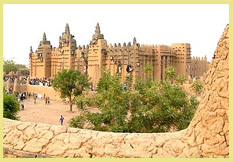




Nubian Monuments - Egypt

Website Category: Ancient Civilisations of the Lower Nile
Area: 4km2
Inscribed: 1979
Criteria: (i) a creative masterpiece (iii) cultural tradition (vi) association with belief system
Location and Values: The Nubian monuments are located on the shores of (the man-made) Lake Nasser in the far south of Egypt, and include temples from 11 separate sites between the Sanctuary of Isis at Philae (below the Aswan dam site) and the great Temple of Ramses II at Abu Simbel, 280 km to the south. They are remarkable in two respects: firstly, in their own right as magnificent Pharaonic monuments dating back 2,000 to 3,000 years, and secondly, because they were completely dismantled, moved and rebuilt in new locations to save them from the rising waters of Lake Nasser. The preservation of the temples of Abu Simbel gives an idea of the scale of this operation: at a cost of US$40 million, the temples were cut into more than 2,000 blocks of stone each weighing 10-40 tonnes, moved and re-assembled in a specially built (artificial, hollow) mountain on the lake shore, 65m above their original location. Nine other temples were moved in a similar way.
Apart from the Temples at Abu Simbel and Philae, the world heritage property includes nine other monuments, now occupying four separate locations. Only two of the Nubian Monuments are located at their original sites - the astonishing granite quarries at Aswan; and the fortress of Qasr Ibrim which was originally built on a 70m-high cliff, 60km north of Abu Simbel – but now has water lapping around its foundations. Just south of the Aswan High Dam is the new site of the Temples of Kalabsha, Beit al-Wali and Kertassi. About 180 km further south, there are two other groups of temples: the first at Wadi As-Subua, the new site for the Temples of Wadi as-Subua, Dakka and Maharraqa, and the second at Amada, where the Temples of Amada and Derr have been re-located.
Slideshow of the Nubian Monuments: Eight separate components of this serial site are shown in the slideshow, beginning in the far south of Egypt next to the Sudanese border at Abu Simbel. Two magnificent rock-cut temples were removed from a site that is now underwater and rebuilt within ‘artificial mountains’ at this location – the Sun Temple of Ramses II and the Hathor Temple of Queen Nefartari. Abu Simbel is normally reached by coach after a very early start and a 3-hour journey through the desert from Aswan. Much closer to Aswan, a second group of re-constructed monuments (also saved from the rising waters of Lake Nasser) can be seen on a small island a short distance from the Aswan High Dam. The biggest of these is the fortress-like Temple of Mandulis, with its fine reliefs and well-preserved Nilometer. Nearby, a small rock-hewn temple, Beit al-Wali is hidden behind a small courtyard in the rocky hillside. Inside can be seen some colourful scenes of Ramses making offerings to Horus and other deities. The third monument on the island is the Kiosk of Qertassi, its mighty columns headed by the goddess Hathor.
Another short boat trip takes visitors to Agilka Island, not far from Aswan, where the Temple of Isis now stands. It was moved there, together with other monuments, after its original home on nearby Philae Island was submerged. It is a stunning location and the temple is a beautiful fusion of ancient Egyptian and Greco-Roman architectural styles. Many of the original reliefs have been deliberately defaced, and the walls are scattered with graffiti, including engraved Coptic crosses and a British war campaign memorial.
The slideshow shows four further sites – the granite quarry at Aswan with its unfinished obelisk; the superb new Nubia museum in Aswan (with some wonderful exhibits including mummies); Elephantine island; and, high on the barren hilltop on the west bank, the mud-brick ruins of St Simeon’s monastery.
Slideshow of the Nubian Monuments:
Comments and Impressions: For security reasons visitors are currently only able to visit the monuments around Aswan (including the Temples of Philae, Kalabsha, Beit al-Wali and Kertassi), and (by convoy in tour buses or plane only) the temples at Abu Simbel. The groups of temples at Wadi as-Subua and Amada are off-limits.
Google Earth View: To view satellite imagery of Abu Simbel on Google Earth, click here. This opens a new window, so when you are finished, just close the Google Earth page and you will be straight back here to continue browsing. It is also worth taking a few minutes to explore the area around the Aswan High Dam with its Temples and quarries, as well as panning around to get a sense of the desert landscape in this part of Egypt and the extent of the enormous Lake Nasser.
Links to other places featuring the ancient civilisations of the lower Nile: Thebes I Memphis I Meroe I Gebel Barkal
Other Links: Official UNESCO Site Details




.jpg)